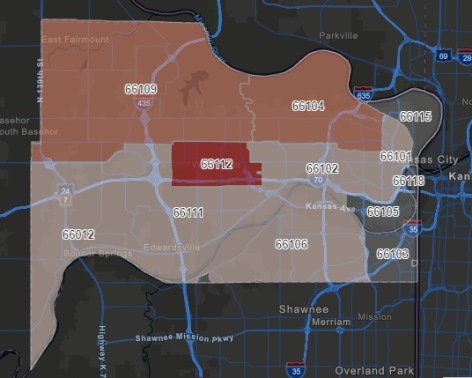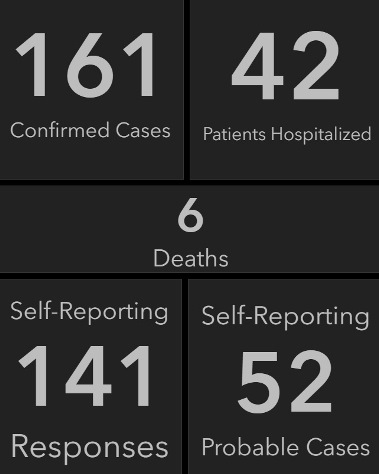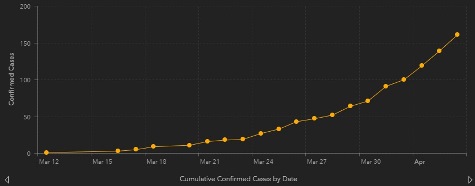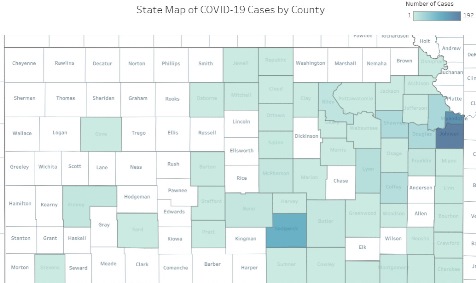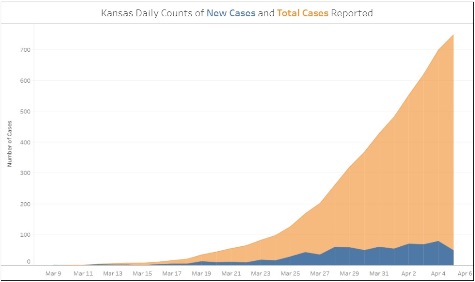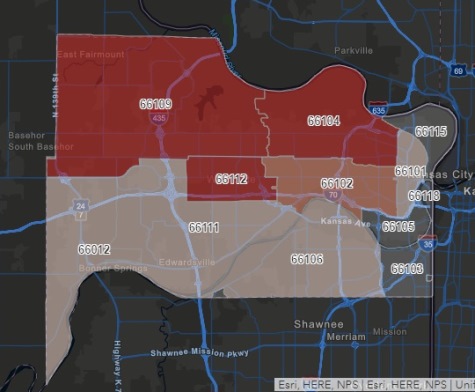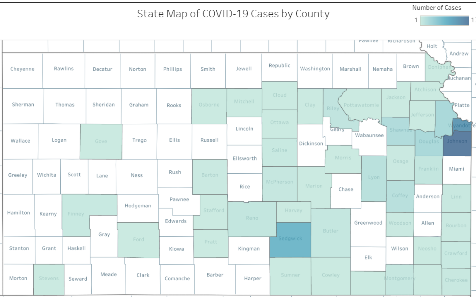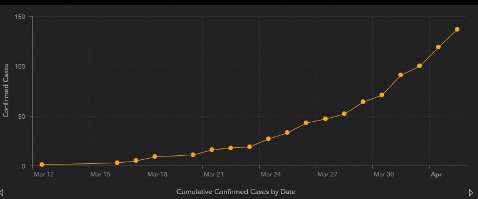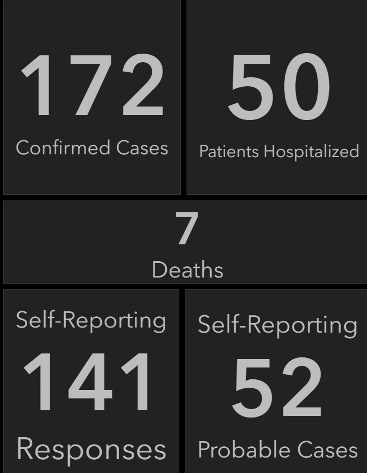
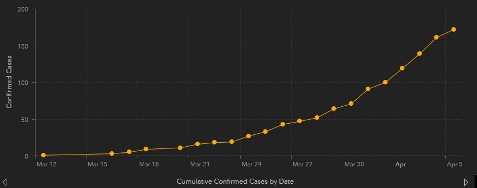
Wyandotte County saw one additional death and 11 new positive COVID-19 cases, according to figures reported Monday morning on the Unified Government’s COVID-19 website.
There have been a total of 172 cases so far in Wyandotte County, according to the COVID-19 website. There were a total of seven deaths in Wyandotte County related to COVID-19.
Fifty persons were hospitalized, an increase of eight since Sunday, the UG COVID-19 website reported.
Kansas reported 747 statewide positive COVID-19 cases on Sunday morning, and a total of 22 deaths, according to the Kansas Department of Health and Environment website.
Doctors at the University of Kansas Health System on Monday morning reported 33 positive COVID-19 cases, with nine patients on ventilators. A few came off ventilators successfully over the weekend, according to the doctors. The number of positive COVID-19 cases on Monday at the health system was the same as reported Friday. Last Thursday there were 36 positive cases at KU Health System, with 14 on ventilators.
“We’re still in the first inning, but maybe we’ve scored a run,” Dr. Steve Stites, chief medical officer of KU Health System, said in a news conference Monday morning.
He said he was cautiously optimistic about the curve, but they would know more later this week.
“We have to choose to beat coronavirus, and we are going to do that,” he said. “We are going to beat it by the actions of every person, every day, shelter in place, wash your hands, keep your distance,” he said., “do those things to help get to the other side.”
COVID-19 rose rapidly in the urban areas of Kansas, then it is expected to slowly spread into the rural areas, he said.
Wyandotte County and Kansas are still under stay-at-home orders.
Dr. Dana Hawkinson, medical director of infection prevention and control at KU Health System, said even if the data shows a plateau, it still will take personal discipline. Social distancing still will be necessary.
“All it takes is one gathering of five to six people, and it can spread,” he said. He added he hoped they were on a plateau and starting to see a decrease in cases.
Dr. Stites said it was important to stay home when you are sick.
The CDC has recently recommended that people wear face masks when they go outside their homes.
Tiffany Horsely, infection control nurse at KU Health System, said wearing face masks will mostly help anyone you come into contact with. The homemade masks are not considered good enough to keep health care workers from being infected as they come into contact with COVID-19 patients; health care workers generally need the commercial N95 masks.
The homemade masks may stop the virus from spreading from a person who has no symptoms but is in the early stages of infection, according to health professionals. As much as half of the population could be asymptomatic.
“The goal of the face masks is to help somebody who may be asymptomatic or presymptomatic from spreading it to other people,” Horsely said.
Dr. Hawkinson said that if you’re walking outside, any spread, coughing or sneezing, would disperse quickly, and would not be as high a risk outdoors. But if you’re coughing and sneezing in a store, there would probably be more risk there, he said.
Horsely said there are procedures to follow when putting on a mask.
People should clean their hands first, she said, then put on the mask. The nose to chin should be covered, she said.
Once it’s on the face, do not touch the mask, she said. Before taking off the mask, clean the hands again. Hold onto the mask by the earloop when taking it off. If it is a disposable mask, throw it away in the trash.
If it is a homemade fabric mask, when taking it off, clean the hands first, and put the mask in a plastic bag, she said. Wash the mask with detergent in between each use, she said.
The doctors also discussed a case from Philadelphia where the coronavirus jumped from a person to a tiger. Dr. Stites said the CDC has advised people who have the virus and have pets to try to find someone else to take care of them temporarily.
